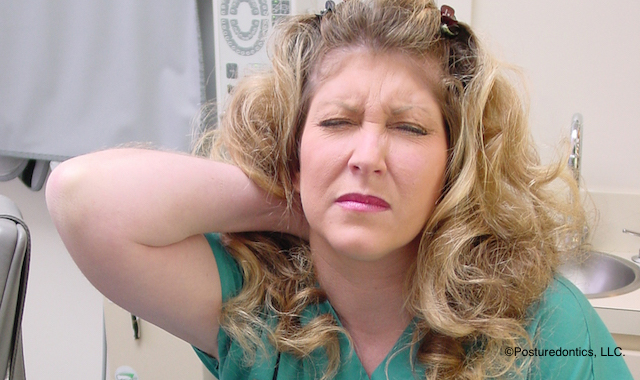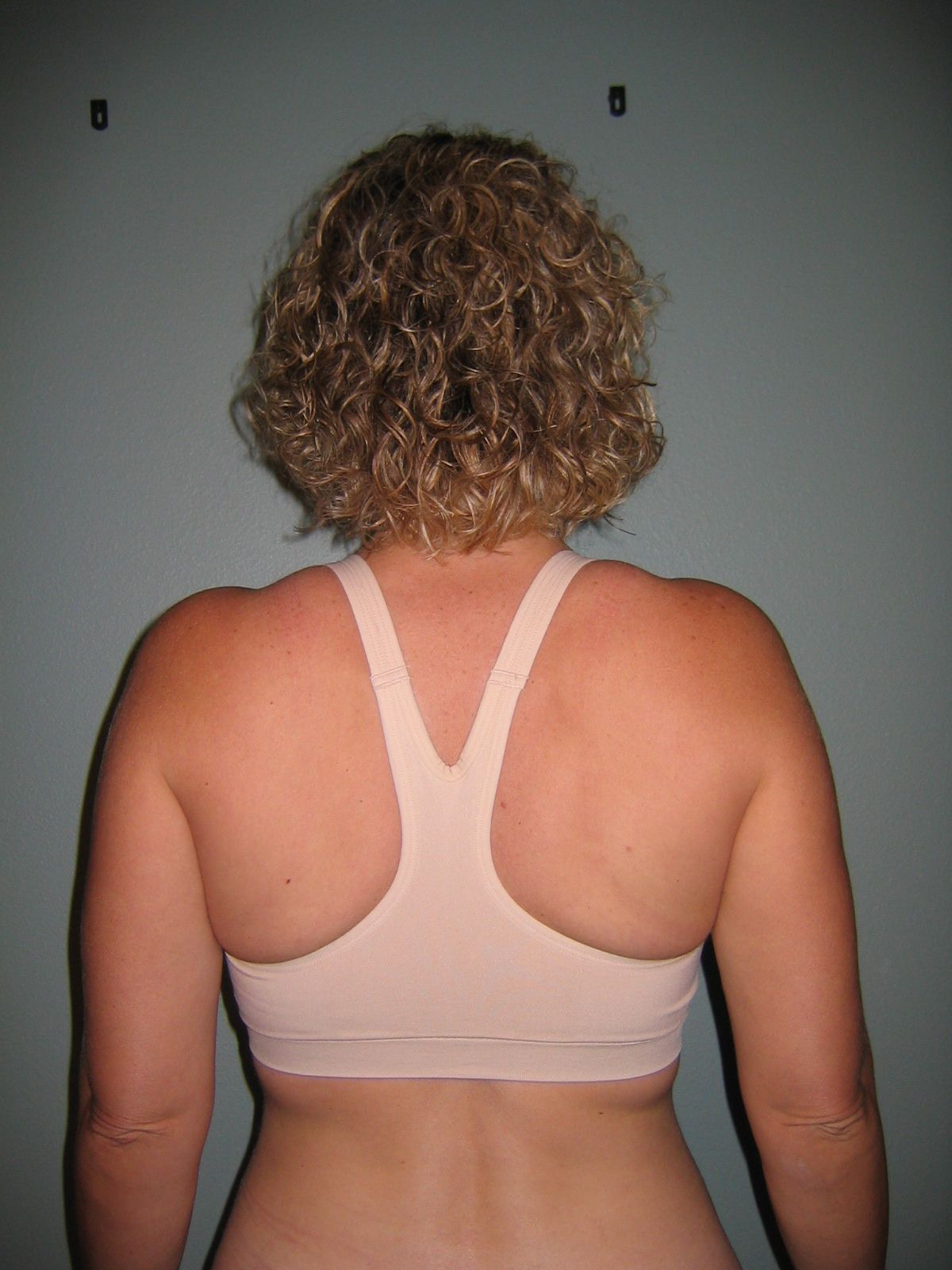Demystifying pain among women in dentistry

The percentage of women pulling up chairside in the operatory is increasing. And studies show that women in dentistry experience a higher frequency and severity of pain than their male counterparts, with the thumbs, hands, hips, neck, and shoulder being particularly problematic.
When considering interventions for the female dental professional, there are dozens of gender-specific considerations: workplace ergonomics, specific exercise, daily activities, clothing, and much more. Following are a just a few of the most important considerations.
Upper trapezius pain
There are several causes of trapezius pain among women in dentistry. Perhaps the most common is due to the fact that many women tend to be shorter in stature than men, and therefore a common ergonomic position problem arises. Women with short torsos cannot position the patient low enough and are forced to raise the shoulders while working. This can cause rock hard shoulders and trigger points in the upper traps. A saddle stool is the easiest long-term solution to this problem. By opening the hip angle, it allows lower positioning of the patient with closer proximity.
Fourth and fifth finger pain
Figure 1

There are two common causes: thoracic outlet syndrome and cubital tunnel syndrome.
Thoracic outlet syndrome has a higher prevalence rate among women than men and is frequently misdiagnosed as carpal tunnel syndrome. Thoracic outlet syndrome (TOS) is a neurovascular disorder caused by entrapment of the brachial plexus and subclavian artery (Figure 1), so in addition to the neurological symptoms of pain, numbness and tingling, one also experiences vascular changes such as coldness, discoloration, and swelling. Symptoms are most common in the medial forearm/hand and into the fourth and fifth fingers.
Many MDs do not know the four diagnostic tests to differentiate thoracic outlet syndrome from carpal tunnel and end up referring TOS patients to a neurologist or surgeon. Ask your doctor for a referral to a certified hand therapist for accurate diagnosis of this syndrome and also the most conservative course of action. Because it is caused by forward head and rounded shoulder posture, ergonomic interventions are imperative to prevent and treat this syndrome, including loupes with a steep declination angle, correct patient positioning, and strengthening the proper stabilizing muscles.
Hip pain
Hip pain in women is usually due to trochanteric bursitis, osteoarthritis, piriformis syndrome, or rheumatoid arthritis. All four conditions are more prevalent among women than men, and occupations that involve prolonged sitting, such as dentistry, may place women at a higher risk for hip pain than other professions.
Prolonged sitting may lead to adaptive muscle shortening causing tightness in the hip and low back muscles, affecting flexibility and joint mobility. In a seated profession, it is a good idea to move the hip regularly out of a flexed position. Women should intermittently stand for exams, extractions, injections, and impression making as well as perform specific hip stretches, especially hip flexor and rotator stretches, on a regular basis, to avoid hip dysfunction caused by prolonged sitting. Functional strengthening of the gluteus medius is also important for women in seated occupations-exercises incorporating a unilateral stance will target this muscle.
Using armrests
There are three general scenarios that necessitate armrests among women in dentistry.
• Large chest or pregnancy. Anything that increases distance between the operator and the oral cavity causes excessive forward reaching with the arms. Women with large chests can understandably have modesty concerns and position themselves slightly further away from the patient. This leads to extended reaching which can cause shoulder or upper back strain. The strain can be minimized with armrests.
• Short forearms. Women with short forearms are forced to reach forward beyond a safe working range. The weight of the extended arm places high forces on the shoulder and upper back, which can lead to musculoskeletal problems.
• Endodontists. Due to long procedures in one static position, endodontists should always have armrests.
Clothing affects pain
Figure 2

Narrow bra straps can dig into the upper trapezius muscle-compressing nerves, creating painful trigger points and headaches due to the weight of large breasts. (Figure 2) Compression on the upper trapezius due to bra straps can be resolved with a sports-type, or racer-back style bra with wide straps that connect in the middle of the upper back. The weight is translated to a wide support band around the ribs and may help reduce pain when worn during work.
Bethany offers much more information on this topic in her three-hour lecture, “Demystifying Pain among Women in Dentistry: Essential Ergonomic & Wellness Guidelines.” To inquire about a lecture for your women’s dental group, please email her at info@posturedontics.com.
Floss and Flip Flops Episode 13: The Focal Point of Infection
January 10th 2023The Sanders Sisters jump into 2023 with a discussion of the many conditions that display some of their earliest symptoms in the oral environment, and all the ways this can connect to systemic issues that can become serious health challenges for patients.
Floss & Flip Flops Episode 12: The 12 Medical Conditions of Concern…and a Partridge in a Pear Tree
December 2nd 2022Join the Sanders Sisters as they welcome the holidays and the last episode of their first season of Floss & FlipFlops! In this episode, the sisters discuss the 12 medical conditions on Santa’s list that can indicate a bigger systemic complication, and how you can integrate your knowledge of these conditions in helping your patients achieve lifelong health!
Oral Health Pavilion at HLTH 2024 Highlighted Links Between Dental and General Health
November 4th 2024At HLTH 2024, CareQuest, Colgate-Palmolive, Henry Schein, and PDS Health launched an Oral Health Pavilion to showcase how integrating oral and general health can improve patient outcomes and reduce costs.